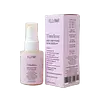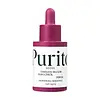What's inside
What's inside
 Key Ingredients
Key Ingredients

 Benefits
Benefits

 Concerns
Concerns

No concerns
 Ingredients Side-by-side
Ingredients Side-by-side

Water
Skin ConditioningLysine
Skin ConditioningHistidine
HumectantArginine
MaskingAspartic Acid
MaskingThreonine
Serine
MaskingGlutamic Acid
HumectantProline
Skin ConditioningGlycine
BufferingAlanine
MaskingValine
MaskingMethionine
Skin ConditioningIsoleucine
Skin ConditioningLeucine
Skin ConditioningTyrosine
MaskingPhenylalanine
MaskingCysteine
AntioxidantHydrolyzed Psoralea Corylifolia Extract
Skin ConditioningSodium Hyaluronate
HumectantNiacinamide
SmoothingAcetyl Glucosamine
Skin ConditioningCentella Asiatica Extract
CleansingMorus Alba Bark Extract
Skin ConditioningPyrus Malus Fruit Extract
Skin ConditioningCamellia Sinensis Leaf Extract
AntimicrobialBroussonetia Kazinoki Root Extract
Skin ConditioningGalactoarabinan
Camellia Japonica Leaf Extract
Skin ConditioningAcacia Senegal Gum
MaskingHydrolyzed Rhizobian Gum
Sodium Lactate
BufferingSodium Glutamate
MaskingEthylhexylglycerin
Skin ConditioningPhenoxyethanol
PreservativeSodium Citrate
BufferingWater, Lysine, Histidine, Arginine, Aspartic Acid, Threonine, Serine, Glutamic Acid, Proline, Glycine, Alanine, Valine, Methionine, Isoleucine, Leucine, Tyrosine, Phenylalanine, Cysteine, Hydrolyzed Psoralea Corylifolia Extract, Sodium Hyaluronate, Niacinamide, Acetyl Glucosamine, Centella Asiatica Extract, Morus Alba Bark Extract, Pyrus Malus Fruit Extract, Camellia Sinensis Leaf Extract, Broussonetia Kazinoki Root Extract, Galactoarabinan, Camellia Japonica Leaf Extract, Acacia Senegal Gum, Hydrolyzed Rhizobian Gum, Sodium Lactate, Sodium Glutamate, Ethylhexylglycerin, Phenoxyethanol, Sodium Citrate
Water
Skin ConditioningButylene Glycol
HumectantGlycerin
HumectantPentaerythrityl Tetraethylhexanoate
EmollientBetaine
HumectantBakuchiol
AntimicrobialHydrangea Macrophylla Leaf Extract
Skin ConditioningAcetyl Hexapeptide-8
HumectantLavandula Angustifolia Extract
Skin ConditioningRosmarinus Officinalis Extract
AntimicrobialOriganum Vulgare Flower/Leaf/Stem Extract
Skin ConditioningThymus Vulgaris Extract
PerfumingAllantoin
Skin ConditioningAdenosine
Skin ConditioningCetearyl Olivate
Hydroxyacetophenone
AntioxidantSorbitan Olivate
EmulsifyingCetearyl Alcohol
EmollientCetyl Palmitate
EmollientSodium Acrylate/Sodium Acryloyldimethyl Taurate Copolymer
Emulsion StabilisingPolyisobutene
Sorbitan Palmitate
EmulsifyingDipotassium Glycyrrhizate
HumectantDisodium EDTA
Sorbitan Oleate
EmulsifyingEthylhexylglycerin
Skin ConditioningCarbomer
Emulsion StabilisingXanthan Gum
EmulsifyingArginine
MaskingCaprylyl/Capryl Glucoside
Cleansing1,2-Hexanediol
Skin ConditioningWater, Butylene Glycol, Glycerin, Pentaerythrityl Tetraethylhexanoate, Betaine, Bakuchiol, Hydrangea Macrophylla Leaf Extract, Acetyl Hexapeptide-8, Lavandula Angustifolia Extract, Rosmarinus Officinalis Extract, Origanum Vulgare Flower/Leaf/Stem Extract, Thymus Vulgaris Extract, Allantoin, Adenosine, Cetearyl Olivate, Hydroxyacetophenone, Sorbitan Olivate, Cetearyl Alcohol, Cetyl Palmitate, Sodium Acrylate/Sodium Acryloyldimethyl Taurate Copolymer, Polyisobutene, Sorbitan Palmitate, Dipotassium Glycyrrhizate, Disodium EDTA, Sorbitan Oleate, Ethylhexylglycerin, Carbomer, Xanthan Gum, Arginine, Caprylyl/Capryl Glucoside, 1,2-Hexanediol
 Reviews
Reviews

Ingredients Explained
These ingredients are found in both products.
Ingredients higher up in an ingredient list are typically present in a larger amount.
Arginine is an amino acid that is important for human development. Your body uses is it to produce hair keratin and skin collagen.
As a cosmetic ingredient, Arginine has antioxidant properties and can also help repair damaged skin. This ingredient is derived either synthetically or from animals.
Arginine isn't fungal acne safe when used in the presence of other lipids (fats, fatty acids, oils, esters, etc). Oils and fats occur naturally within the skin, so take caution when using Arginine if you're prone to fungal acne.
Learn more about ArginineEthylhexylglycerin (we can't pronounce this either) is commonly used as a preservative and skin softener. It is derived from glyceryl.
You might see Ethylhexylglycerin often paired with other preservatives such as phenoxyethanol. Ethylhexylglycerin has been found to increase the effectiveness of these other preservatives.
Water. It's the most common cosmetic ingredient of all. You'll usually see it at the top of ingredient lists, meaning that it makes up the largest part of the product.
So why is it so popular? Water most often acts as a solvent - this means that it helps dissolve other ingredients into the formulation.
You'll also recognize water as that liquid we all need to stay alive. If you see this, drink a glass of water. Stay hydrated!
Learn more about Water